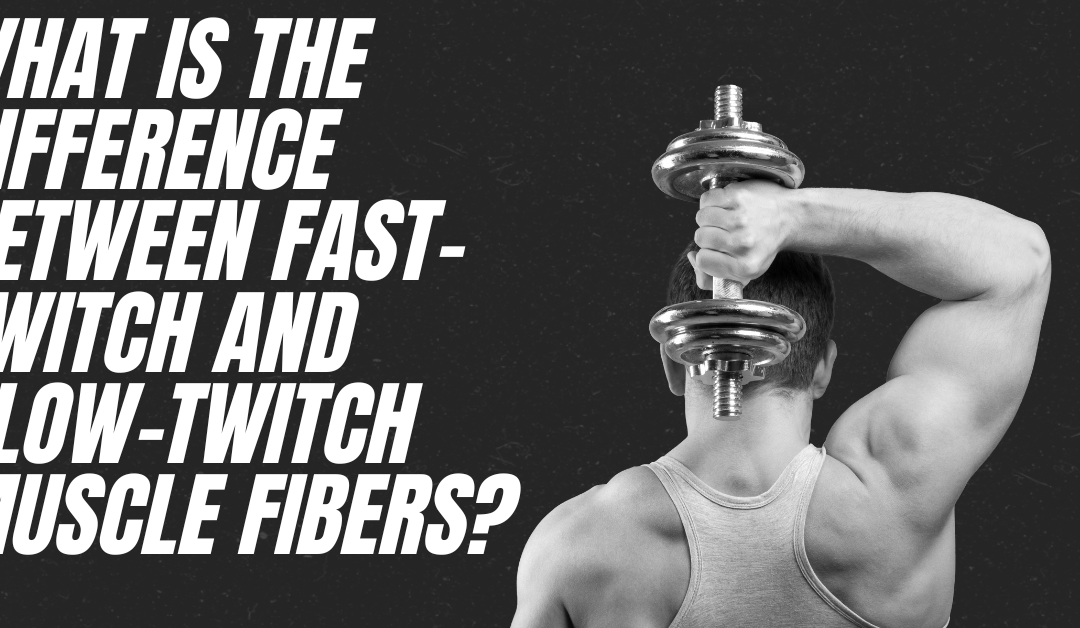If you’re going to the gym, training hard and seeing results, you probably don’t give much thought to fast twitch muscle fibers vs slow twitch. However, if you want to maximize performance and reach your goals, you need to be able to answer: what is the difference between fast-twitch and slow-twitch muscle fibers?
We’re going to outline:
- Different muscle fiber types
- Which muscle fibers are necessary for each movement
- Exercises that engage different types of muscle fibers
What Is The Difference Between Fast-twitch and Slow-twitch Muscle Fibers?
What are Fast-twitch Muscle Fibers?
Fast-twitch muscle fibers are type 2 fibers. Everyone has type 1 and type 2 fibers, which are slow or fast fibers. If you’re engaging fast-twitch fibers, they’re used for:
- Sudden bursts of strength
- Big movements
Energy used for fast-twitch muscles is created anaerobically. Imagine working through an endurance workout plan, which may be challenging, but you won’t need a sudden burst of energy for these movements.
However, if you’re powerlifting and trying to bench press 400 pounds, you’ll need to engage your type 2 muscle fibers.
Why?
You need a lot of energy, quick.
Type II fibers also include:
- Type IIB/IIX: known for being inefficient yet produce the most force.
- Type IIA: known for fatiguing slower and being a mix of both IIX and Type I fibers. These are “intermediate” fibers.
You can train to improve all of these types of fibers, based on your own individual goals.
What are Slow-twitch Muscle Fibers?
If you’re warming up before a workout or training with moderate weight, you’ll engage your slow-twitch muscle fibers. These fibers:
- Require slow energy
- Activate first
- Are ideal for low-intensity activities
Considered your type 1 muscle fiber, these fibers will engage first before your type 2 fibers do. However, most people use slow-twitch fibers because they require even, steady energy to be performed.
When engaged, these fibers will run on oxygen rather than anaerobic energy, like fast-twitch fibers.
When are Fast-twitch Muscle Fibers Used?
Confused? Don’t be. Fast-twitch fibers will be used naturally by your body when they require a fast burst of energy. The massive energy burst will allow you to perform a PR, but then you’re going to need a rest.
Why?
Your energy will be depleted, and rest will help you get it back.
Fast-twitch fibers may be sufficient for a sprinter, and they often have as much as 75% of type II fibers, but they tire out faster than a marathon runner.
So, suppose you’re wondering why sprinters can’t run long distances as efficiently as a marathon runner. In that case, it’s because their bodies have adapted to utilize more type II fibers than type I fibers.
Training discipline would need to change for a sprinter that wants to become a distance runner.
In short, fast-twitch muscle fibers are for power athletes.
When are Slow-twitch Muscle Fibers Used?
Slow twitch fibers are higher in endurance athletes. In fact, a 2021 study showed that endurance athletes had more slow-twitch fibers. For example, you’ll need these fibers to engage if you:
- Lift with low resistance and high reps
- Run marathons
- Are a distance runner, swimmer, etc.
If you need to perform activities for long periods of time, you’ll want slow-twitch muscle fibers to engage because they use lower amounts of energy, evenly. You can’t fatigue during a marathon or you won’t make it to the end, and this is why you’ll have slow-twitch muscle fibers engaging.
In short, slow-twitch muscle fibers are ideal for endurance athletes.
Bringing it all together, your fast-twitch fibers will also recruit slow-twitch fibers. For example, if you’re doing high-intensity endurance training, both of these fibers will engage to increase your aerobic power.
Exercises for Fast Twitch Muscle Fibers vs Slow Twitch
You can increase either of these fiber types when training. For example, if you want to create more fast-twitch fibers, you’ll need to:
- Lift heavy
- Focus on power movements
Additionally, studies have shown that when training for a marathon, participants were able to increase their slow-twitch muscle fibers. Tapering was used in the study, which means that the participants reduced volume and intensity throughout training, which led to higher slow-twitch performance while also improving strength and power.
Training Type 1 and 2 Fibers at Once
You can train both muscle fibers at once. Remember, your fast-twitch fibers will often engage your slow-twitch muscle fibers, too. One way to train both of these at once is through following a fluid training routine where you:
- Engage in strength training
- Mix in endurance training
- Mix in power training
If you focus on just one form of training, you won’t reach your potential across the board. With that said, you wouldn’t expect someone that is a powerlifter to put a heavy focus on endurance training, because they’re trying to move as much weight as possible.
General resistance training will engage type 1 and 2 fibers, but you’ll want to do more than 1 – 3 reps to get in the slow-twitch fibers.
Training Type Fast-twitch Fibers Specifically
How do you know when your fast-twitch muscle fibers are engaged? Typically, they engage when you can only perform an activity for a short period of time before becoming tired. A few examples include:
- Lifting heavy weight
- Boxing
- Sprinting
- MMA
Training Type Slow-twitch Fibers Specifically
Alternatively, you can train your slow-twitch muscle fibers intentionally, too. You will engage these fibers for:
- Biking
- Marathon running
- Rowing
- Walking
Even yoga is a great way to engage these slow-twitch fibers.
Note: We are preparing articles on how to train fast-twitch muscle fibers and how to train slow-twitch muscle fibers, if you want to maximize your athletic potential.
Fast twitch muscle fibers vs slow twitch seem complex, but they’re all about energy. If you want to train for endurance, you’ll need to work on those slow-twitch muscle fibers. However, if you want to become a powerlifter, you’ll naturally work your fast-twitch fibers because you need a large, quick burst of energy.

